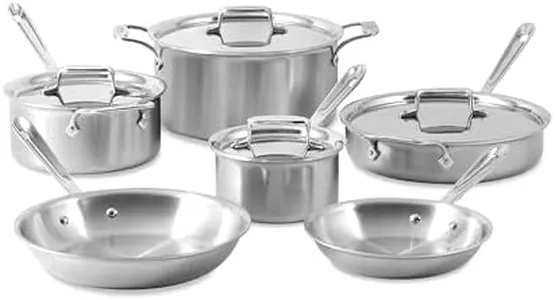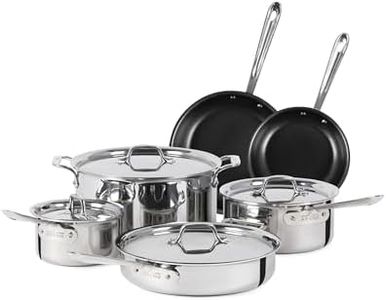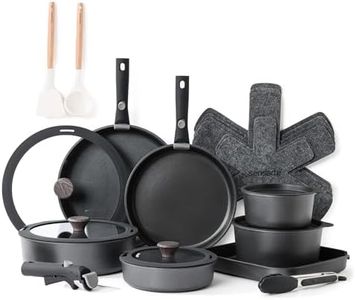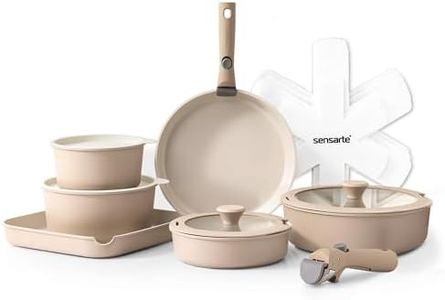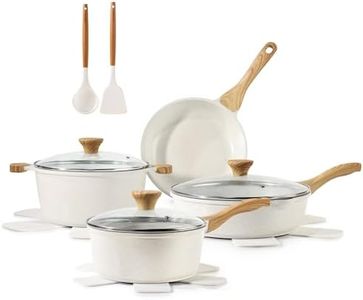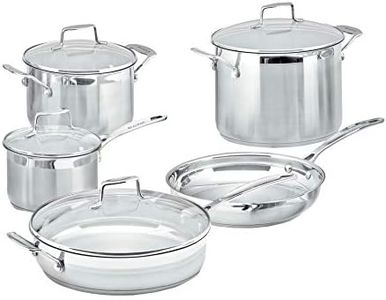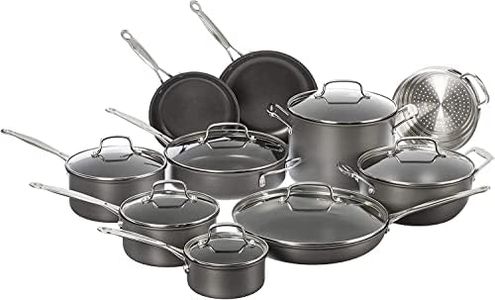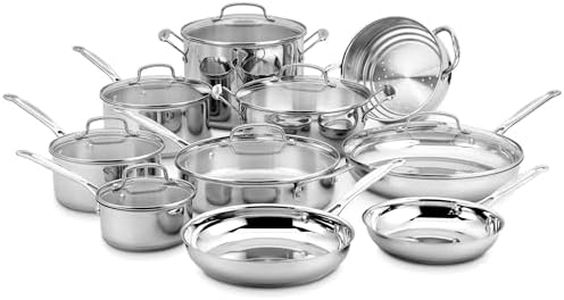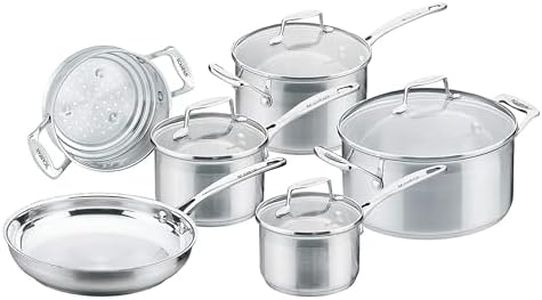We Use CookiesWe use cookies to enhance the security, performance,
functionality and for analytical and promotional activities. By continuing to browse this site you
are agreeing to our privacy policy
10 Best Pots And Pans Sets
From leading brands and best sellers available on the web.Buying Guide for the Best Pots And Pans Sets
Choosing the right pots and pans set can make a big difference in your cooking experience. With so many materials, shapes, and set combinations out there, it's easy to feel overwhelmed. Instead of looking just at the number of pieces, focus on the types of pans you'll actually use and the features that work best for your cooking style. Think honestly about what you cook most often, how much space you have for storage, and how much effort you want to put into cleaning and maintenance. Making a list of the cookware pieces you use most can help guide your selection. Ultimately, aim for versatility, durability, and comfort in your daily use.MaterialMaterial refers to what the pots and pans are made of, like stainless steel, nonstick, aluminum, or cast iron. This is crucial because it affects how evenly the pans heat, how easy they are to clean, and how they react with certain foods. Stainless steel is durable and non-reactive, but can be tricky with sticking; nonstick is very easy to clean and best for foods like eggs or pancakes but usually less durable; cast iron holds heat really well but can be heavy and needs more care; while aluminum provides good heat conduction but may warp. If you want simple, all-around cookware, stainless steel or hard-anodized aluminum are often a solid choice, while nonstick can be ideal if you do a lot of low-fat or easy-release cooking. Pick the material that best suits the foods you cook and the level of care you want to put into your pans.
Piece Count and TypesPiece count tells you how many items come in the set, but more isn't always better. Some sets include items you may rarely use, like extra lids or specialty pans. Focus instead on what’s included: most people need at least one large and one small frying pan, a couple of saucepans, and a larger pot or Dutch oven. Consider the dishes you cook most often—if you make lots of soups, a large stock pot is key; for stir-fries, a sauté pan or wok might be more important. Look for a set that covers your bases without cluttering your kitchen with unnecessary extras.
Compatibility with CooktopsNot all pots and pans work on every cooktop. Some materials and bases don't work on induction stoves, for example, while others are ideal for gas, electric, or ceramic cooktops. If you have a specific cooktop type (like induction), make sure your cookware is compatible. It’s worth checking for labels or symbols that indicate universal compatibility, especially if you may change your stove in the future.
Oven SafetyOven safety means whether the pots and pans can go into the oven, and if so, up to what temperature. This matters if you like to start dishes on the stove and finish them in the oven, or if you want to bake casseroles or roast. Check both the pan and the lid—often, handles or glass lids have lower heat limits. If you often bake or broil, choose sets that are fully oven-safe and can withstand higher temperatures.
Weight and Handle ComfortThe weight of the cookware and the comfort of the handles may seem minor but make a big difference in everyday use. Heavier pots might be great for steady simmering but can feel awkward when pouring or moving. Handles should feel secure and comfortable in your hand, not get excessively hot, and be easy to grip, especially when full. Think about your strength and how you use your pans—if you prefer lightweight cookware for ease, look for sets labeled as 'light' or 'easy-lift.'
Ease of CleaningEase of cleaning refers to whether the cookware cleans up simply by hand or is dishwasher-safe. Nonstick pans are easiest to clean, requiring just a simple wipe, whereas stainless steel may need more scrubbing, and cast iron needs special care to maintain its seasoning. Dishwasher-safe sets can save time, but not all pans or handles are suitable for machine washing. If you value quick cleanup, prioritize nonstick or dishwasher-safe sets.
Lid Type (Glass vs. Metal)Lids can be made of glass or metal, and this affects how you use the pans. Glass lids let you check on your food without lifting the lid, saving heat and moisture, while metal lids are typically more durable and handle higher oven temperatures. If you like to monitor your cooking closely, glass is handy, but choose metal if you value durability or use your cookware in very high heat.
